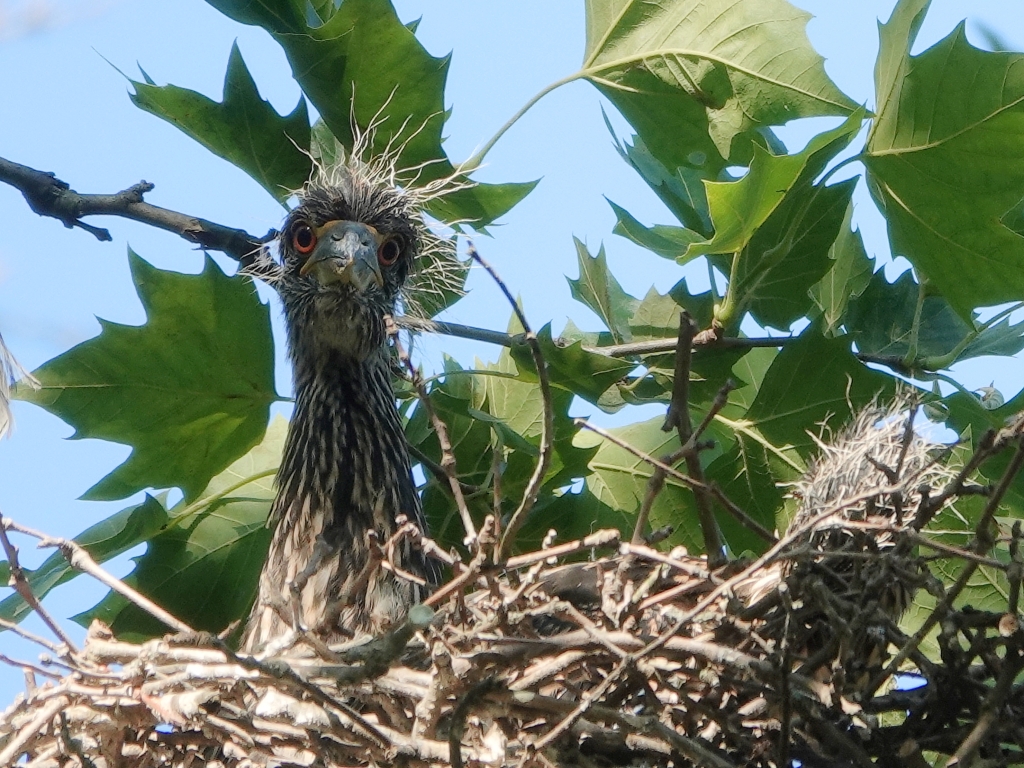As posted here in early May, a pair of Yellow-crowned Night Herons (Nyctanassa violacea) courted, bonded and built a nest high in a sycamore canopy in my leafy urban neighborhood. Here’s a belated but happy follow up.
Getting right to the point…

After the early May courtship, I watched for weeks for signs of a successful nest. Research told me that incubating Yellow-crowned Night Herons (YCNH — Institute for Bird Population code for short) sit low in the nest, so I knew that spotting a parent on the nest would be difficult.

YCNH incubation takes about 25 days, so hatch was recent or would be soon.


YCNH nestlings remain in the nest 30 to 40 days after hatching, so there would be lots of opportunities for better views. Hatching occurs according to egg order (not all the same day like many songbirds), so the chicks would be developing at different times.



YCNH adults share and trade off parenting duties. There was always one or the other standing watch. The chicks were fed at least twice a day.




The chicks grew, developed and ventured onto branches, then to adjacent trees. Once able to fly, they were seen in nearby yards and odd spots around the neighborhood — still returning to the nest at feeding times and overnight.







Eventually, the adults appeared less frequently and it was time for all the YCNH chicks to fledge the nest.

Four months after the first adult Yellow-crowned Night Herons appeared in the neighborhood in early April, the successful nesting was complete. These herons will likely migrate to the West Indies for the winter and return to the area next spring. We’ll be watching for them.
Note: All photos were taken at a safe distance to avoid interfering with successful nesting. Learn more here.

